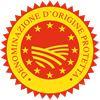Description
The Afuega'l Pitu PDO is a cheese product with whole, pasteurised or not-pasteurised cows' milk from Frisian and Asturiana de los Valles races and their crossbreeds.
Production Area
The production area of Afuega'l Pitu PDO is located in the following municipal areas: Morcín, Riosa, Santo Adriano, Grado, Salas, Pravia, Tineo, Belmonte, Cudillero, Candamo, Las Regueras, Muros del Nalón and Soto del Barco in the Autonomous Community of the Principality of Asturias.
Production Method
The milk is coagulated by adding a small quantity of rennet or lactic ferments at a temperature between 22-32°C, for 15-20 hours. The curds are put into plastic moulds to drain for about 12 hours. After having lost some whey, the curds are transferred to a smaller mould, where salt is added to the surface and left there for 12 hours before being removed and laid on a holed tray to implement final draining. From then until the point of sale, the cheeses are transferred to a maturation chamber. In the case of cheeses obtained from kneaded paste, draining is carried out in larger receptacles with the help of gauze. After 24 hours, the cheeses are brought to the kneading machine, where salt, and if necessary paprika, is added. Then the paste is put into moulds or gauzes to allow for the complete removal of whey, and then laid there for a period of 24 hours. Seasoning takes place in suitable locations during 5-60 days according to the level of seasoning required. Once packed, they are kept in cold storage until sale.
Appearance and Flavour
Afuega'l Pitu PDO has a white or orange colour - gingery when paprika is added - an elongated or tapering shape, and weighs 200-600 gr. The diameter varies from 8 to 14 cm and the base from 5 to 12 cm. The rind has a variable consistency according to the seasoning and the paprika added. It has a slightly acidic flavour, lightly salted, creamy and rather dry. The flavour of red cheeses is strong and spicy. The aroma is delicate and intensifies with seasoning; the consistency of the paste is more or less soft, but this characteristic is lost due to seasoning.
History
The first historical evidence on the origins of Afuega'l Pitu PDO can be found in documents from the 18th century, where the use of this cheese is mentioned as currency and a mean to pay taxes until the end of the 19th century. Other documents also highlight its circulation under other names.
Gastronomy
Afuega'l Pitu PDO should be kept in a fresh, dry, and well-aired place. Once cut, the cheese should be put in the least cold area of the refrigerator, wrapped in Clingfilm or tin foil. It can be eaten fresh, spread on bread or, when seasoned, by itself or as an ingredient in various dishes. It is used as a filling for veal slices, savoury cakes with peppers, in the preparation of pâté with peppers and aubergine. It goes very well with seafood. It is also used in the preparation of blueberry cakes and goes perfectly with Asturian cider.
Marketing
The product is sold as Afuega'l Pitu PDO, in traditional varieties: Atroncau blancu, with tapering shape, not kneaded and white colour; Atroncau roxu, a tapering shape, kneaded, and red-orange colour; Trapu blancu, with cylindrical, elongated shape, kneaded, and white colour; Trapu roxu, cylindrical, elongated shape, kneaded and red-orange colour. It is sold whole or sliced.
Distinctive Features
The excellent quality of the milk used in the production of Afuega'l Pitu PDO is due to the diet of the cattle which graze all year round on grassy meadows, thanks to the oceanic climate which provides a lot of rain.






